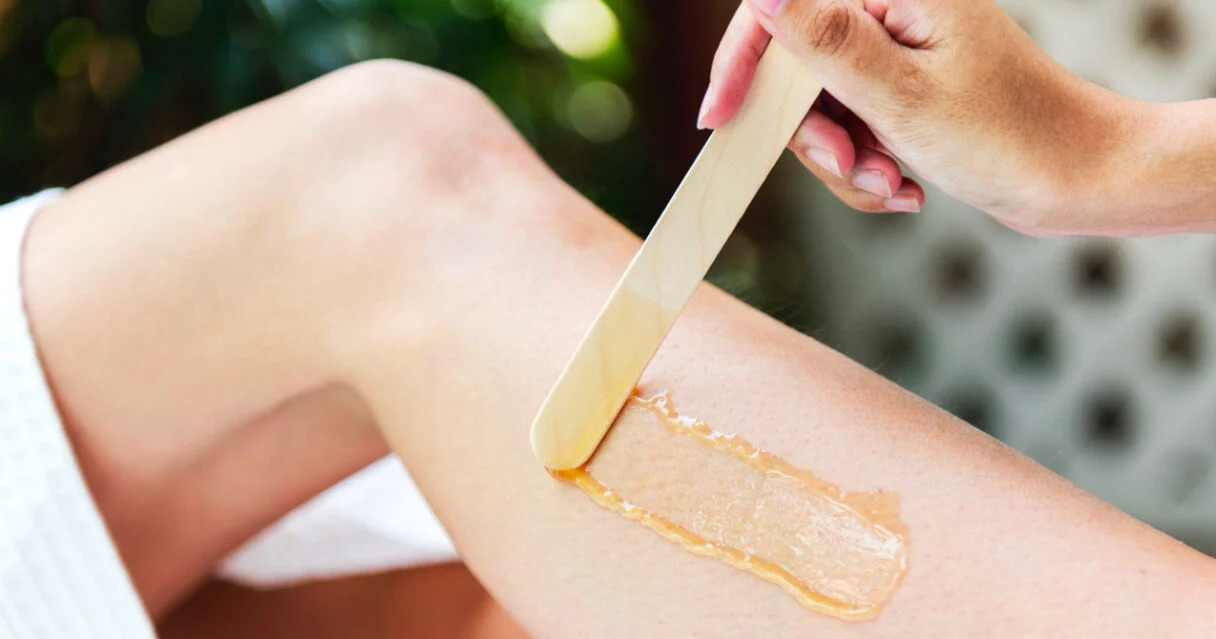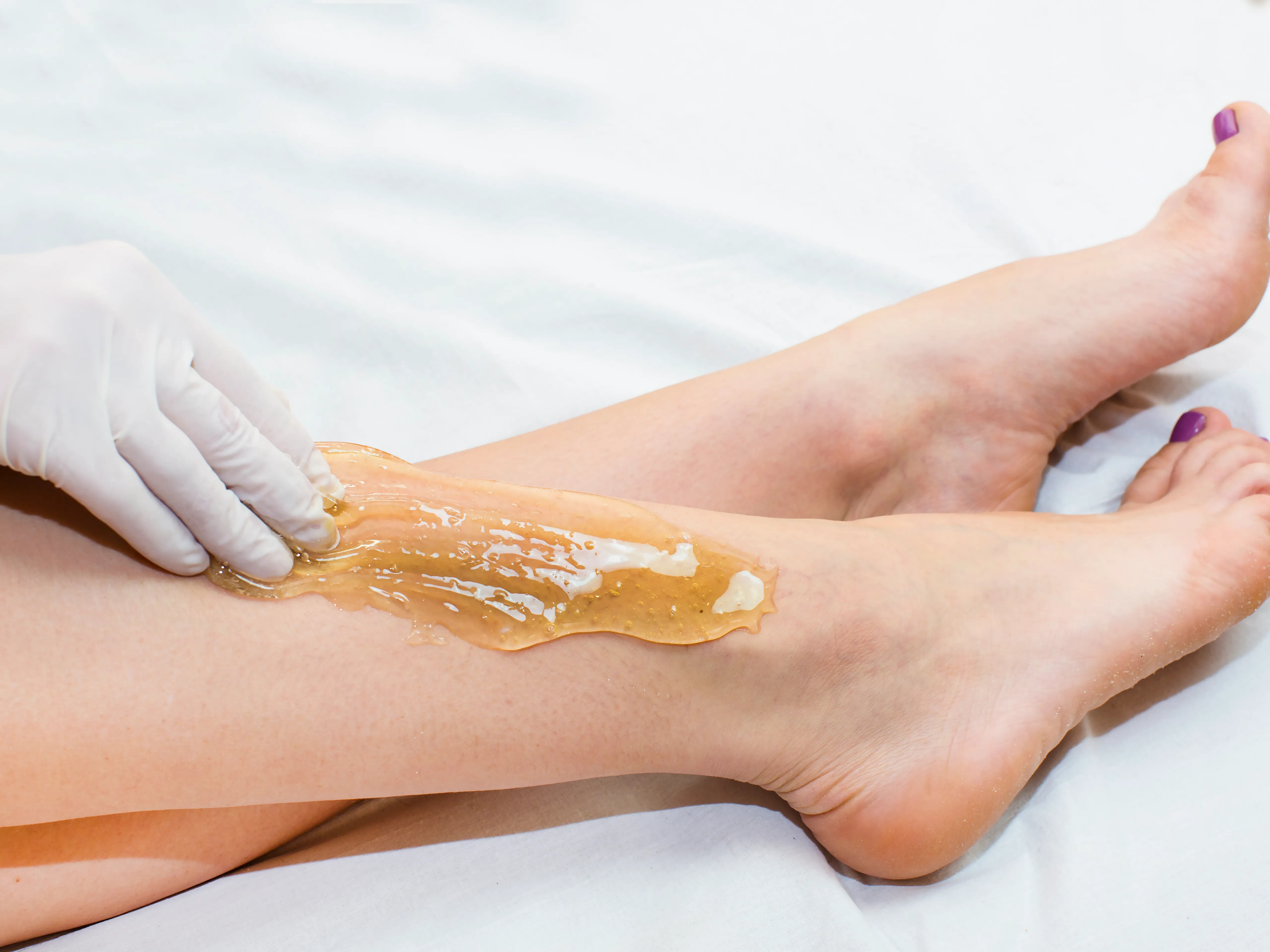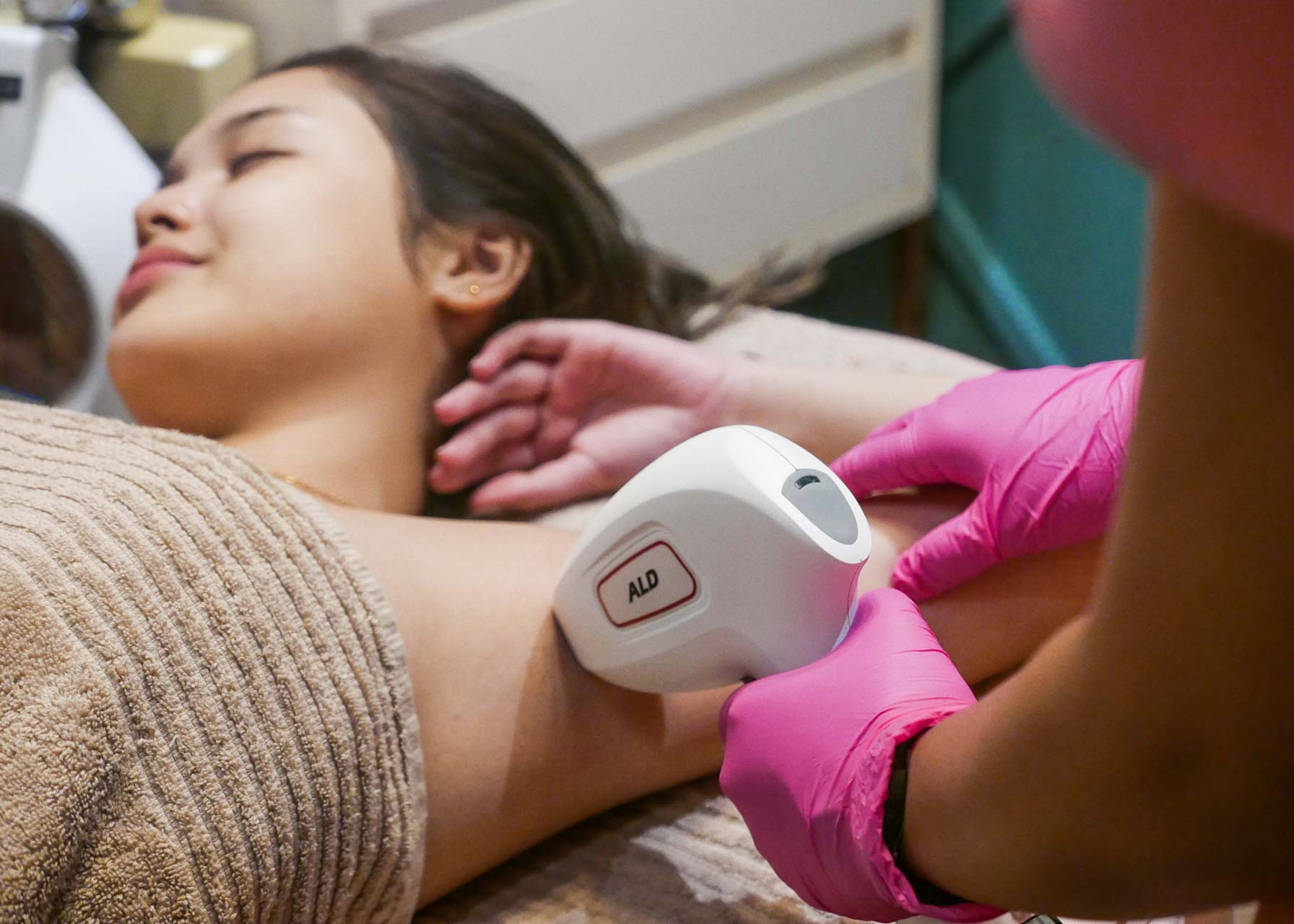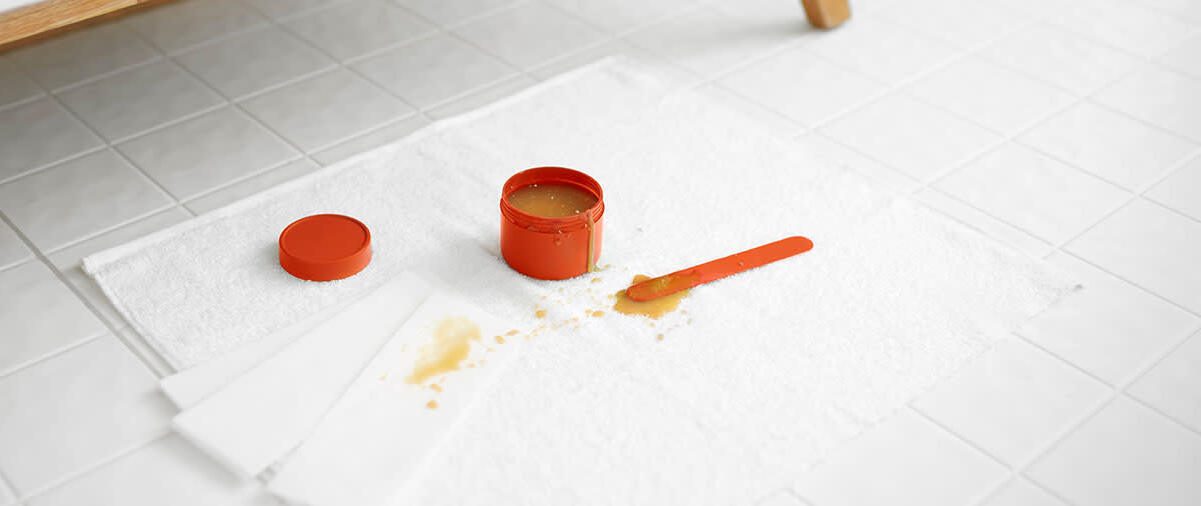Home>FAQs>What Hair Removal Method Is Available For Clients Who Cannot Tolerate Soft Wax Treatments?


FAQs
What Hair Removal Method Is Available For Clients Who Cannot Tolerate Soft Wax Treatments?
Modified: September 23, 2023
Learn about the alternatives to soft wax treatments for clients with low tolerance. Discover effective and gentle hair removal methods at our salon.
(Many of the links in this article redirect to a specific reviewed product. Your purchase of these products through affiliate links helps to generate commission for Under-tec.com, at no extra cost. Learn more)
Table of Contents
Introduction
When it comes to hair removal, soft wax treatments are a popular choice for many clients. However, there are cases where clients may have sensitivities or conditions that prevent them from tolerating soft wax treatments. In such situations, it’s important to provide alternative hair removal methods that are suitable and effective.
Understanding the challenges and concerns that clients who cannot tolerate soft wax treatments face is crucial to ensuring their comfort and satisfaction. This article will explore various alternative hair removal methods that can be offered to cater to the needs of these clients.
Whether it’s due to sensitive skin, allergies, or personal preferences, having a range of alternative options allows clients to find a suitable solution that works for them. From hard wax treatments to laser hair removal, there are several options that can provide effective and long-lasting results.
By offering alternative hair removal methods, you can ensure that all of your clients feel welcome and have access to treatments that meet their specific needs. Let’s explore these options in more detail, keeping in mind the importance of providing safe, effective, and comfortable hair removal experiences for everyone.
Understanding Soft Wax Treatments
Soft wax is a common hair removal method that involves applying a thin layer of warm wax to the skin and then removing it using paper or cloth strips. This technique is effective in removing hair from large areas of the body, such as legs and arms.
The main advantage of soft wax is that it adheres to both the hair and the skin, allowing for the removal of even the shortest hair strands. It also exfoliates the skin, leaving it smooth and soft. Soft wax treatments are quick and efficient, making them a popular choice for many individuals.
During a soft wax treatment, the wax is typically heated to a comfortable temperature and then evenly spread onto the desired area. The wax is then covered with a strip, firmly pressed down, and swiftly pulled against the direction of hair growth, removing the hair from the root.
However, it’s important to note that soft wax treatments may not be suitable for everyone. Some clients may have sensitive skin, which can lead to irritation, redness, or even allergic reactions. Additionally, clients with certain medical conditions or using specific medications may need to avoid soft wax treatments due to increased sensitivity or risk of skin damage.
It’s crucial for estheticians and hair removal professionals to have a thorough understanding of soft wax treatments, including their benefits, limitations, and potential risks. This knowledge allows for better assessment of client needs and the ability to provide suitable alternatives when necessary.
By being knowledgeable about soft wax treatments, you can confidently offer alternative hair removal methods to clients who cannot tolerate soft wax. This ensures that you can provide effective and safe hair removal solutions while maintaining the highest standards of client care and satisfaction.
Common Concerns and Challenges with Soft Wax
While soft wax treatments are widely used for hair removal, there are certain concerns and challenges associated with this method. Recognizing these issues allows hair removal professionals to address client concerns effectively and provide suitable alternatives when necessary.
One common concern with soft wax is the potential for skin irritation. The process of applying and removing the wax, along with the removal of hair from the root, can cause redness, inflammation, and discomfort. Clients with sensitive skin may be particularly prone to these side effects. It’s crucial to communicate and assess the client’s skin condition before proceeding with a soft wax treatment.
Another challenge with soft wax is the presence of allergies or sensitivities to its ingredients. The wax itself may contain substances such as resin or fragrances that can trigger an allergic reaction. It’s essential to perform a patch test to check for any adverse reactions or allergies before using soft wax on a larger area of the body.
The temperature of the wax is also a concern, as it needs to be at a suitable warmth for application. If the wax is too hot, it can potentially burn the skin, leading to pain and discomfort. Hair removal professionals must be cautious and regulate the wax temperature to ensure the safety and comfort of their clients.
Moreover, certain medical conditions, such as eczema or psoriasis, can make soft wax treatments unsuitable. These conditions may cause increased sensitivity and inflammation, making the waxing process painful and potentially exacerbating the underlying skin condition. It’s important to have open and honest communication with clients about any medical conditions they may have to determine the best course of action.
Additionally, some clients may have recently used certain skincare products or medications that can make their skin more sensitive. It’s crucial to conduct a thorough consultation to ensure that there are no factors that could increase the risk of adverse reactions or skin damage during the soft wax treatment.
By being aware of these common concerns and challenges associated with soft wax, hair removal professionals can better understand their clients’ needs and avoid any potential problems. This knowledge also allows professionals to recommend alternative hair removal methods that address these concerns and provide a comfortable experience for clients who cannot tolerate soft wax treatments.
Alternative Hair Removal Methods for Clients Who Cannot Tolerate Soft Wax Treatments
For clients who cannot tolerate soft wax treatments due to sensitivities, allergies, skin conditions, or personal preferences, it is important to offer alternative hair removal methods that are equally effective and comfortable. Here are five alternative options to consider:
- Hard Wax Treatments: Hard wax is a popular alternative to soft wax as it adheres only to the hair, not the skin. This reduces the risk of skin irritation and makes it suitable for sensitive skin. Hard wax is applied in a thick layer, allowed to cool and harden, and then removed by gently pulling it off. It is particularly effective for removing coarse hair and can be used on all parts of the body.
- Sugaring Hair Removal: Sugaring involves using a sticky paste made from natural ingredients, such as sugar, lemon juice, and water, to remove hair. The paste is applied in the opposite direction of hair growth and then quickly pulled off, removing hair from the root. Sugaring is gentle on the skin, less painful than waxing, and can be used on all skin types and hair textures.
- Laser Hair Removal: Laser hair removal is a long-lasting solution that targets hair follicles with laser energy, inhibiting hair growth. This method is ideal for clients who want more permanent results. It works best on individuals with fair skin and dark hair, as the laser targets the pigment in the hair follicles. However, advancements in laser technology have made it more suitable for a wider range of skin and hair types.
- Electrolysis Hair Removal: Electrolysis is another permanent hair removal method that works by inserting a fine needle into individual hair follicles and delivering a small electric current to destroy the hair root. It is effective on all skin and hair types and can be used on any part of the body. Electrolysis requires multiple sessions and can be time-consuming, but it provides long-term results.
- Depilatory Creams: Depilatory creams are chemical-based products that break down the protein structure of the hair, allowing it to be easily wiped away with a cloth or sponge. These creams are easy to use and can be applied at home. However, it’s essential to choose a reputable brand and follow the instructions carefully to avoid skin irritation or adverse reactions.
It’s important to note that each alternative hair removal method has its own advantages and limitations. For example, laser hair removal and electrolysis may require professional treatments and multiple sessions, while depilatory creams may provide temporary results. Understanding your client’s preferences, skin type, and hair growth patterns will help you recommend the most suitable alternative method for them.
By offering these alternative hair removal methods, you can ensure that clients who cannot tolerate soft wax treatments have access to comfortable and effective solutions that meet their specific needs. It’s important to stay updated on the latest techniques and advancements in hair removal to provide the best possible services to your clients.
Hard Wax Treatments
Hard wax treatments are a popular alternative to soft wax for clients who cannot tolerate the latter. Unlike soft wax, which adheres to both the hair and the skin, hard wax only adheres to the hair, making it a more gentle and suitable option for clients with sensitive or delicate skin.
The process of a hard wax treatment involves applying a thick layer of warm wax to the desired area. As the wax cools and hardens, it encapsulates the hair, allowing for easy removal without the need for cloth or paper strips. The hardened wax is then peeled off in a swift motion, pulling the hair out from the root.
One of the main advantages of hard wax is its ability to remove coarse hair effectively. It can be used on various parts of the body, including sensitive areas such as the bikini line or underarms. Additionally, hard wax is often infused with soothing ingredients like chamomile or aloe vera, providing additional comfort for the skin.
Compared to soft wax, hard wax treatments are generally less painful and cause less irritation, making them a suitable choice for clients who have had adverse reactions to soft wax in the past. It is crucial to note that proper technique and temperature regulation are essential when using hard wax to avoid any discomfort or burns.
When performing hard wax treatments, estheticians or hair removal professionals should ensure that the wax is heated to the correct temperature. If the wax is too hot, it can potentially burn the skin, while if it is too cool, it may not effectively encapsulate the hair for easy removal. Achieving the right consistency is key to a successful hard wax treatment.
Hard wax treatments provide clients with an effective hair removal solution that minimizes skin irritation and discomfort. It is particularly beneficial for clients with sensitive skin or those who prefer a gentler hair removal method. By offering hard wax as an alternative to soft wax, you can cater to a wider range of clients and ensure their comfort and satisfaction with their hair removal experience.
Sugaring Hair Removal
Sugaring hair removal is an alternative method to soft wax treatments that has gained popularity in recent years. It involves using a sticky paste made from natural ingredients such as sugar, lemon juice, and water to remove hair from the root.
The sugaring paste is applied to the skin in the opposite direction of hair growth and then quickly flicked off, removing the hair along with it. This technique is similar to waxing but offers some distinct advantages.
One of the main benefits of sugaring is that it uses all-natural ingredients, making it suitable for clients who prefer a more organic approach to hair removal or have sensitive skin that may react to chemical-based products.
Sugaring is also less painful than waxing. Since the paste adheres only to the hair and not the skin, there is less pulling and tugging involved, resulting in a more comfortable experience for clients.
Another advantage of sugaring is that it can be used on all skin types and hair textures. Whether a client has fine hair, coarse hair, or even ingrown hair, sugaring can effectively remove it while minimizing the risk of irritation or ingrown hair development.
Furthermore, sugaring has exfoliating properties. As the paste is removed, it gently exfoliates the skin, leaving it smooth and soft. This is particularly beneficial for clients who want to achieve both hair removal and skin rejuvenation in one treatment.
It’s worth noting that sugaring hair removal may require some practice to master the technique and achieve the best results. Professionals who offer sugaring as a hair removal option must receive proper training to ensure they can perform the treatment effectively and safely.
Overall, sugaring hair removal offers a natural and less painful alternative to soft wax treatments. With its versatility and exfoliating benefits, it is an excellent choice for clients who have sensitive skin, prefer a more organic approach, or are seeking a gentler hair removal method.
Laser Hair Removal
Laser hair removal is a highly effective and long-lasting alternative to soft wax treatments for clients who want a more permanent solution to unwanted hair. This method uses concentrated beams of laser energy to target and destroy hair follicles, inhibiting future hair growth.
Laser hair removal works best on individuals with fair skin and dark, coarse hair, as the laser targets the melanin pigment in the hair follicles. However, advancements in laser technology have made it more suitable for a wider range of skin and hair types, including those with lighter hair or darker skin tones.
The laser treatment is performed by a trained professional who uses a handheld device to deliver the laser energy to the treatment area. The energy is absorbed by the hair follicles, causing damage that ultimately leads to their permanent reduction.
One of the significant advantages of laser hair removal is its long-lasting results. While multiple sessions are required to achieve the desired outcome, the reduction in hair growth can be significant. Clients may experience smooth, hair-free skin for an extended period, saving time and effort on frequent hair removal routines.
Laser hair removal targets multiple hair follicles simultaneously, allowing for quick and efficient treatment of larger areas like the legs, back, or chest. However, it is also versatile enough to be used on smaller, more delicate areas such as the upper lip or bikini line.
It’s important to note that laser hair removal is a specialized procedure that requires professional expertise and the use of FDA-approved equipment. Clients should undergo a thorough consultation to determine their candidacy for the treatment and to understand the potential risks and benefits.
While laser hair removal offers long-lasting results, it is not entirely permanent. Maintenance sessions may be required to address any new hair growth that may occur in the future. However, these maintenance sessions are usually less frequent than the initial treatments.
Overall, laser hair removal provides a highly effective and long-lasting alternative to soft wax treatments. It is particularly suitable for individuals who desire a more permanent solution to unwanted hair and are willing to invest in a series of treatments for lasting results.
Electrolysis Hair Removal
Electrolysis hair removal is a safe and effective alternative for clients who cannot tolerate soft wax treatments or are looking for a permanent hair removal solution. This method works by inserting a fine needle into individual hair follicles, delivering a small electric current to destroy the hair root.
One of the key advantages of electrolysis is its versatility. It can be used on all skin types and hair colors, making it a suitable option for clients who may not be suitable candidates for other hair removal methods, such as laser hair removal.
During an electrolysis session, a trained professional inserts a thin needle into the hair follicle, targeting the root. A low-level electric current is then applied, damaging the hair follicle and preventing future hair growth.
Electrolysis can be performed on various areas of the body, including the face, arms, legs, and bikini line. It is particularly effective for smaller, more delicate areas or for clients who want precise hair removal, such as shaping the eyebrows or removing unwanted facial hair.
One of the main benefits of electrolysis is its permanent hair removal results. While multiple sessions are necessary to treat all active hair follicles in a given area, once a hair follicle has been successfully treated and destroyed, it will not produce hair again. This makes electrolysis a popular choice for clients who desire a long-lasting solution.
It’s important to note that electrolysis is a meticulous and time-consuming process. The duration of each session depends on the size of the treatment area and the density of hair. However, the results are worth the investment of time and effort for clients who seek a permanent solution to their hair removal needs.
Electrolysis requires the expertise of a skilled professional, as the procedure involves inserting a needle into the skin. Choosing a licensed electrologist and ensuring proper hygiene and sterilization protocols are followed is crucial to minimize the risk of infection or other complications.
Overall, electrolysis hair removal provides a permanent solution for clients who cannot tolerate soft wax treatments or are looking for a more permanent hair removal method. With its ability to target various skin and hair types and deliver long-lasting results, electrolysis is a reliable and effective alternative option.
Depilatory Creams
Depilatory creams offer a convenient and painless alternative to soft wax treatments for clients who cannot tolerate them or prefer a simple at-home hair removal method. These creams contain chemical-based ingredients that break down the structural proteins in the hair, allowing it to be easily wiped away.
Using a depilatory cream is relatively straightforward. The cream is applied evenly to the desired area, and then left on for a specified amount of time, typically a few minutes. During this time, the active ingredients in the cream work to dissolve the hair. Afterward, the cream is wiped off using a spatula or cloth, taking the dissolved hair with it.
Depilatory creams are known for their painless application and removal, making them a popular choice for clients who want a hassle-free hair removal option. They can be used on various parts of the body, including the legs, arms, underarms, and bikini area.
One of the main advantages of depilatory creams is their accessibility. These products are widely available in drugstores, supermarkets, and online platforms, allowing clients to easily purchase and use them in the comfort of their own homes. This is especially convenient for individuals who prefer DIY hair removal or have busy schedules.
It’s important to note that while depilatory creams offer a convenient and pain-free hair removal option, their results are temporary. Hair regrowth typically occurs within a few days to a week, similar to shaving. Regular application of depilatory creams is necessary to maintain hair-free skin.
However, it’s crucial to perform a patch test before using a depilatory cream on a larger area of the body, as some individuals may experience skin irritation or allergic reactions. Following the instructions provided with the product and adhering to the recommended application time is essential to reduce the risk of adverse effects.
Overall, depilatory creams provide a quick, painless, and accessible alternative to soft wax treatments. They are an excellent choice for clients who prefer a simple at-home hair removal method or need a temporary solution for special occasions or events.
Conclusion
When it comes to hair removal, it is essential to provide alternative methods for clients who cannot tolerate soft wax treatments. By understanding the challenges and concerns associated with soft wax and offering suitable alternatives, you can ensure that all clients feel comfortable and have access to effective hair removal solutions.
Hard wax treatments provide a gentler option for clients with sensitivity or allergies, as they only adhere to the hair, minimizing the risk of skin irritation. Sugaring hair removal offers a natural and less painful alternative, using a sticky paste made from natural ingredients to remove hair from the root.
Laser hair removal and electrolysis are ideal for clients seeking more permanent solutions. Laser hair removal targets and destroys hair follicles, inhibiting future hair growth, while electrolysis uses a low-level electric current to permanently remove individual hair follicles.
For clients who prefer a quick and painless method, depilatory creams offer a convenient solution. These creams work by dissolving the hair and can be easily used at home, providing temporary hair removal results without any discomfort.
Understanding the unique needs and preferences of your clients and recommending the most suitable alternative hair removal method is crucial. By offering a range of options, you can ensure that all clients receive effective and comfortable hair removal experiences.
Always remember to stay up to date with the latest hair removal techniques and advancements in the industry. This allows you to provide the best possible services to your clients and ensure their satisfaction and trust in your expertise.
Overall, by offering alternative hair removal methods for clients who cannot tolerate soft wax treatments, you create a welcoming and inclusive environment where everyone can find a suitable solution for their hair removal needs.









